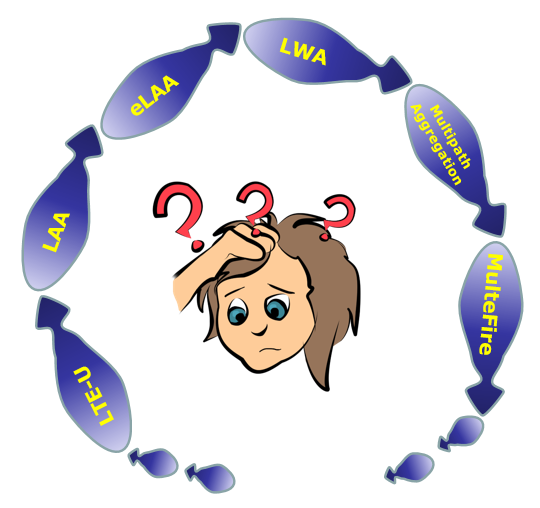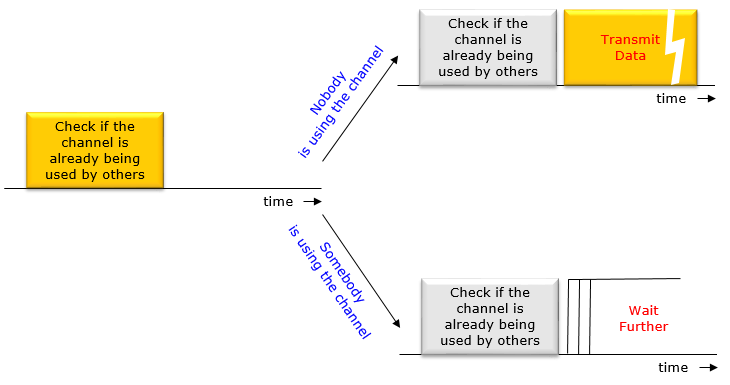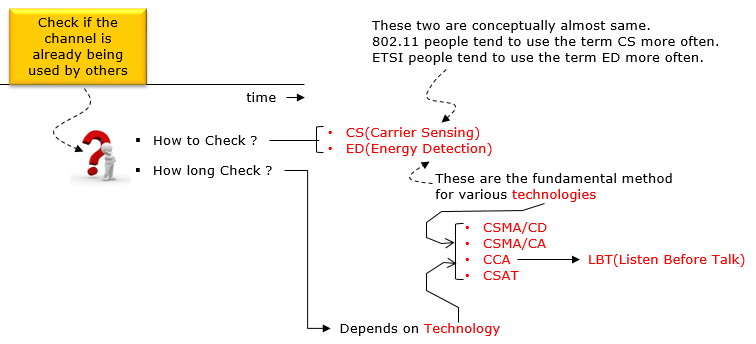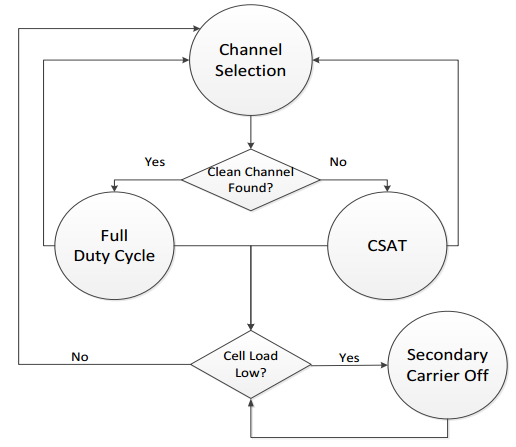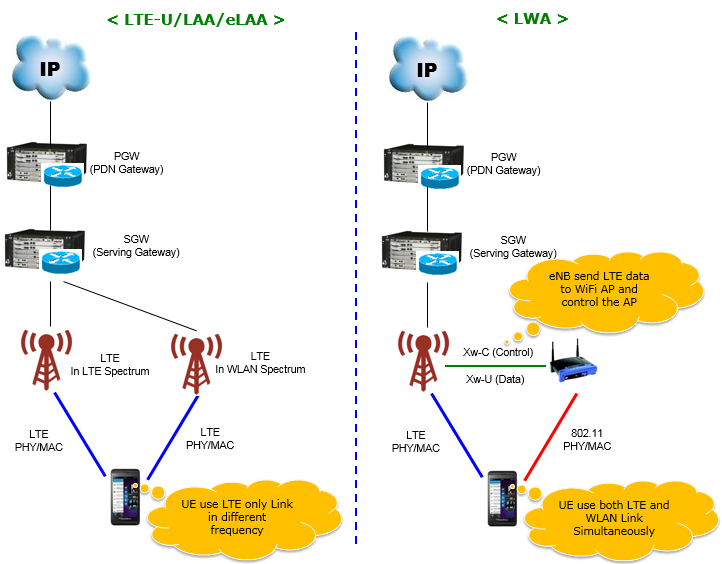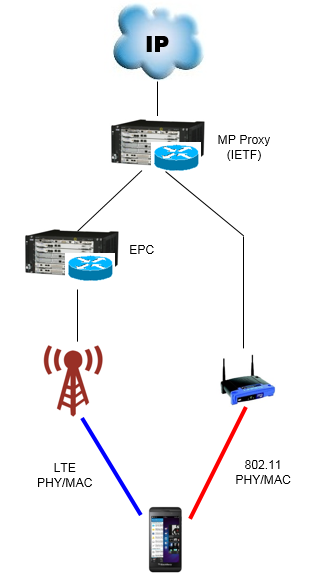|
4G/LTE - LTE U |
|||||||||||||
|
LTE-U(LTE-Unlicensed) / LAA / LWA / MultiPath / MulteFire /LTE-R (LTE-Railway)
Recently (from 2014 as far as I remember), there has been pretty much discussion (even real testing going on) on LTE being extended to non-standard mode of operation (Non 3GPP yet at least up to this point, as of Jan 2015). Note : In early second half of 2016, I saw a company to try LTE-U device for the first timie, and as it approaches to the end of the year, I saw many companies testing LTE-U devices. Now in early 2017 we are at the stage of testing LAA.
Two of the technology falling into this category is LTE-U and LTE-R. LTE-U has been proposed and start being implemented in the industry for about a year and LTE-R just start being proposed as Integrated wireless railway network to be commercialized .
As of Jun 2016, I don't see/hear anything about LTE-R.. but I saw the drastic evolution of unlicensed LTE that created several different technologies (names) to the list. It started with LTE-U and evolved to LAA, eLAA and recently we are hearing of new branches like MulteFire and LWA. I don't know how many other technologies are waiting to be newly evolved and which of these technologies will survive to the end.. some of them are now pretty well defined but there are a lot of other features to be defined technically. I will keep following them up and try to write down whatever has been clarified.
Followings are the brief descriptions for each of these technologies. I will put further details under separate section if more technical details are published. Also, I put many whitepapers and YouTube links under Reference section. I would recommend you to go through those materials when you have free time and use this page as reminder afterwards. (The contents of this table is mostly based on Ref [7] )
< Comparative Tables on LTE Unlicensed Technologies >
Followings are the list of topics that gives you further details of various LTE-Unlicensed technologies.
In every wireless communication, the communicating parties (transmitter and reciever) need to allocatie a certain amount of resources in both time domain and frequency domain. However, we don't have much control over frequency domain resource allocation because those resources are fixed permanently or semi-statically. So it is usually not in the scope of scheduling. When it comes to scheduling, Time Domain resource allocation tend to be more important.
In 3GPP based technology (i.e, Cellular Communication Technology like LTE), the time domain scheduling is obvious and determinstic even when there are many devices are in communication because all of the time domain resources determined by the central master (Base Station /Node B/eNode B). However, in 802.11 based technology(i.e LAN, Wireless LAN etc) there is no central controling master in terms of scheduling. In this case, there is always possibility that transmission signal from one device interfere with communication of other devices. To prevent (or at least reduce) this situation, we need a special algorithm for Time Domain Scheduling. Time Domain Scheduling in this case mean 'Determine when to transmit and how long it transmit'.
Then why we need to care of this kind of thing in LTE-Unlicensed technology ? Basically LTE Unlicensed technology (e.g, LTE-U, LAA etc) refer to a technology in which LTE operates in 802.11 frequency region. So LTE need to keep the rule set by 802.11 in order not to prevent the communiction between existing 802.11 devices.
There are many variations of the time domain scheduling, but the basic idea and logic is same. Basic idea is 'Your transmission should not interfere with communication between others' and the basic logic is 'Before you transmit anything, check if the chennel(medium) is already being used by others'. This logic can be illustrated as follows.
Then you may have some questions as follows : How to check (i.e, how to figure out) whether the channel (medium) is being used by other ? and how long the device need to check before it make any decision ?
In the effort to answer these questions, you will come across many terms that may confuse you for so long. I tried to list up those confusing words and how these are related to each other in following illustration. If you are new to this area, I would suggest you to understand 'what is CS and ED ?' first and then try to understand how CS / ED is used in higher level technology like CSMA/CD, CSMA/CA, CCS, LBT, CSAT etc. Already feel headache ? :)
Now let's look into the details of each of these terms.
CS / ED : CS stands for Carrier Sensing and ED stands for Energy Detection. The fundamental concept is same. The term CS is more frequently used in 802.11 area especially for Wired LAN Area. In this technology, the device measures the energy level in the channel (medium) mostly in the form of voltage and compares the measured voltage with a specified value (threshold value). ED stands for Energy Detection. it is more frequently used in wireless/cellular technology. In this method, the device measures the energy level in the channel (medium) mostly in the form of Power and compares the measured power with a specified value (threshold value)
CSMA/CD or CSMA/CA : As the term CSMA(Carrier Sensing Multiple Access) implies, these are technology of figuring out whether a channel is available or not based on CS method. You don't need to know the details of thechnology under the context of LTE-Unlicensed technology, but if you are really interested in thses method refer to CSMA/CD and CSMA/CA page.
CCA : CCA stands for Clear Channel Assessment. As the word implies, this is a method to figure out the channel is clear (i.e, nobody is using the channel). CCA perform ED(Energy Detection) for a certain period of time and make a decision whether the channel is clear or not. It is a common method being used in 802.11 (WLAN) technology. How long CCA perform ED before it make decision ? It depends on higher layer technology (e.g, 802.11 FHSS, 802.11 OFDM, LBT). However, the minimum time span is 18 us sec. What is the threshold energy level to make decision whether the channel is being used by some other device or not ? This also varies depending on power class of the device and reciever antenna gain. However, the base threshold is -70 dBm. NOTE : Refer to 802.11 specification and ETSI EN 300 328 if you want to get full details and requirement for CCA.
LBT: LBT stands for Listen Before Talk. According to ETSI EN 300 328, LBT is defined as 'mechanism by which an equipment applies clear channel assessment (CCA) before using the channel' (In this document, you can find a couple of variations of LBT depending on different situations). As you see in the terminology itself, 'Listen Before Talk' indicate two major process, the first one is 'Listen' and the second part is 'Talk'. The meaning of 'Talk' is obvious. It means 'Transmit Data'. The tricky part is 'what does it exactly mean by 'Listen''. In more technical definition, 'Listen' mean 'perform CCA(Clear Channel Assessment)'. You can find a more detailed description on LBT in IEEE P802.19-08/0034r0 (The specific value (i.e, transmission time, threshold value may vary depending on application, but I think this explains overal LBT mechanism in easier way than other documents).
CSAT : CSAT stands for Carrier Sensing Adaptive Transmission. CSAT is very similar to CSMA or LBT(Listen Before Talk), the main difference is that CSAT monitors(senses) the medium for much longer duration (around tens of msec to 200 msec) comparing to normal WiFi CSMA, so that it would not interfere not only with WiFi data transmission (QoS traffic) but also with more sporadic transmission like discovery signals (Ref [2]). Unlike other techiques described in this section (defined with focus on 802.11 technology), CSAT is defined by LTE-U Forum with focus on 3GPP technology.
Channel Selection : How to find proper channel to use ?
In LTE, every transmission within a specified spectrum is well managed/scheduled both for downlink and uplink. So Network can figure out exactly when to transmit something and when UE will transmit something.. but in Unlicensed band transmission and reception by the existing WiFi device is not as predictable as in LTE. Basically anybody can transmit in anytime as long as it complies with CSMA/CA procedure.
In this kind of situation, how LTE network can schedule transmission in Unlicensed band ? One method is for LTE cell to perform a special channel selection procedure and allocate the channel only when it is clean.
In channel selection process, network measures the energy level within the allowed band and use those area in which the energy level is under a certain threshold (e.g, -62 dBm over 20 Mhz BW). The Cell performs this kind of channel selection algorithm in on-going mode and if needed it will select more suitable channel and switch to it.
What if you (a Cell) fail to find any clean channel at the initial channel selection process ? In this case, the cell use another mechanism called CSAT (Carrier-Sensing Adaptive Transmission). Technically, CSAT is very similar to CSMA or LBT(Listen Before Talk), the main difference is that CSAT monitors(senses) the medium for much longer duration (around tens of msec to 200 msec) comparing to normal WiFi CSMA, so that it would not interfere not only with WiFi data transmission (QoS traffic) but also with more sporadic transmission like discovery signals (Ref [2]).
According to Reference [5], there seems to be roughly three levels of Coexistence strategy regarding LTE-U. Most of these techniques are already mentioned in previous section, but let me rewrite in a little bit different words.
Channel Selection : This says "Use WiFi band only when it is not being used (i.e, the band is clean)". To figure out whether it is being used or not, you have to measure the engergy level of the target band as described above.
Time-domain coexistence techniques : Even when it fail to find any clean channel in channel selection stage, there is still some chance. Even though there is no clean channel at the point of channel selection, there might be some empty slots if you look at the time domain scheduling with relatively high granularity. To find out this kind of time domain opportunity and in order not to make an interference at any time, they are considering several different technology like CSAT, eCSAT, LBT. My personal question were 'do we have to support all these technology everywhere (every devices)?'. This question was answered by Reference [5] as follows.
For non listen-before-talk (LBT) markets such as the US, South Korea, China and India, CSAT (Carrier Sensing Adaptive Transmission) can be used without changing Rel-10 Carrier Aggregation protocols for co-channel coexistence. For LBT markets such as Europe and Japan, Rel-13 LAA will enable channel sharing with Wi-Fi by performing clear channel assessment (CCA) based channel availability sensing and adapting the transmission duration on a fine timescale, ranging from 1ms-10ms
Opportunistic SCell operation : To me, this sounds like a rule (not a technology). Basically this says "Use the unlicensed band only when it is really necessary (e.g, in real demand on high throughput or when the primary cell is overloaded). Release the unlicensenced and fall back to anchor carrier when the demand for unlicenced band is not critical.
Interplay of these coexistance technical components are well illustrated as follows in Ref [2].
LTE-U stands for LTE-Unlicensed. This is the first real implementation of the whole LTE-Unlicensed family as far as I remember. Since this is already implemented and tested relatively widely and a lot of details are known, I thought I got enough information to write this subject in a separate page. Refer to LTE-U page for the details.
LWA (LTE-WLAN Aggregation)
In other LTE-Unlincensed technology, LTE borrow only radio spectrum from WLAN and all the transmission/reception technology except radio spectrum purely based on LTE. However, in LWA LTE borrows not only WLAN radio spectrum but also WLAN Access Point for transmitting data. This key difference is illustrated as below. To implement this key difference, we would need to implement many other technical components. The most important part would be to implmenet special interface between LTE eNB and WLAN AP. Then you may ask.. at which layer the eNB and WLAN will be connected ? It would be quicker to interact if they can get connected at lower layer (e.g, PHY/MAC), but LTE PHY/MAC and WLAN PHY/MAC is completely different.. so hard to make any connection at this layer. So they will use higher layer (specifically PDCP) for this connection. As you know, there is no PDCP layer in WLAN. So connecting at PDCP layer might be a little bit misleading. More accruately speaking, LTE PDCP packet will be encapsulated into WLAN MAC frame. Now LWA is defined in 3GPP specification and I created a separate page for 3GPP LWA because it will be a long story. Refer to LWA page for the 3GPP details.
Around the end of 2016, I start hearing of implementing this both on UE modem and Network, UE testing equipment side. Now (as of early 2017) I am hearing of testing this feature on real UE. So I decided to create separate page for this. Read LAA page for the details.
Putting very simple way, Multipath Aggregation (more formally Multipath TCP Aggregation : mptcp) is LTE-WLAN aggregation at TCP level as illustrated below. The key component in this architecture would be MP Proxy (Multipath Proxy) and this part is being defined in IETF (Ref [12] )
As of now (Jan 2015), I don't have any specific information other than Integrated wireless railway network to be commercialized .
YouTube
[1] #SCWSAmericas: Qualcomm LTE-U demo (2015) [2] Analyst Angle: A performance boost from combining Wi-Fi and LTE unlicensed (2015) [3] Analyst Angle: Qualcomm: improving spectrum efficiency with LTE unlicensed (2015) [4] Nokia MulteFire (2016) [5] LTE in unlicensed spectrum (LTE-U) and Wi-Fi coexistence testing (2016) [6] Enhanced LAA Downlink + Uplink in Unlicensed Spectrum: Part I: Capacity and Coexistence demo (2016) [7] LAA Downlink + Uplink in Unlicensed Spectrum: Part II: Coverage demo (2016) [8] MulteFire™ Technology (2016) [9] LTE Band 46 | LAA Unlicensed Spectrum explained (2019).
Reference :
[1] LTE-U/LAA, MuLTEfire™ and Wi-Fi; making best use of unlicensed spectrum (Qualcomm) [2] LTE in Unlicensed Spectrum: Harmonious Coexistence with Wi-Fi (Qualcomm) [3] 3GPP TR 36.889 - Study on Licensed-Assisted Access to Unlicensed Spectrum [4] 3GPP LAA Workshop Document [5] Achieving good coexistence.- Qualcomm [6] LTE Aggregation and Unlicensed Spectrum - 4G America [7] #WiFiNOW: 8 LTE in Unlicensed Bands Latest developments - Qualcomm (YouTube) [8] LTE-U/Wi-Fi coexistence with CableLabs - Wi-Fi Now Episode 13 (YouTube) [9] Cracking Google Project Fi & LTE/Wi-Fi Aggregation with Qualcomm - Wi-Fi Now Episode 5 (YouTube) [10] The LTE-U vs. Wi-Fi debate continues empowering carriers with seamless Wi-Fi - Wi-Fi Now Episode 15 (YouYube) [11] Ruckus Wireless LTE Operation in Unlicensed Spectrum (YouTube) [13] Licensed-Assisted Access to Unlicensed Spectrum in LTE Release 13 [14] Real-time LTE/Wi-Fi Coexistence Testbed (National Instruements) [15] ETSI EN 300 328 Wideband transmission systems;Data transmission equipment operating in the 2,4 GHz ISM band and using wide band modulation techniques; [16] Wi-Fi vs EU LBT : Houston, we have a problem [17] LTE-U CSAT Procedure TS V1.0 [18] November 2008 IEEE P802.19-08/0034r0
|
|||||||||||||
